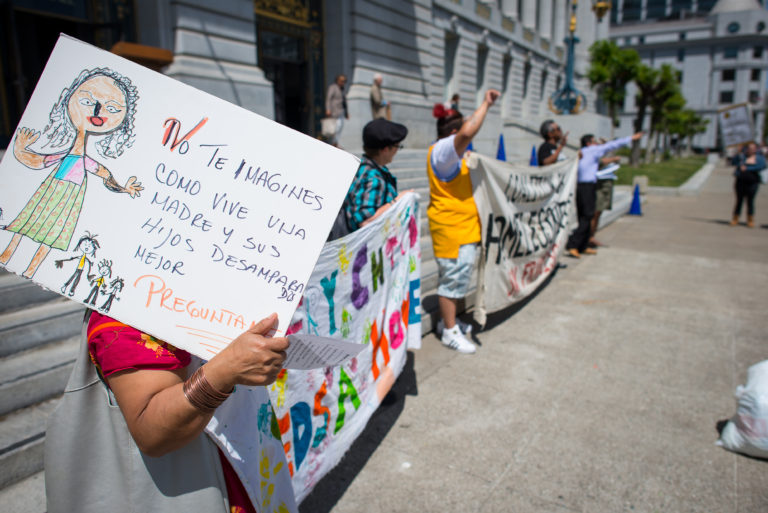
The 2019 one-night homeless count found 201 families (612 people), a count similar to the 2017 one-night count of 190 families (601 persons). That means 8 percent of the total counted homeless population is made up of families. The Coalition on Homelessness says the count is actually much higher, pointing out that the school district—using its own definition of homelessness—lists more than 2,000 students as being homeless. And the subcategory of chronically homeless people in families grew from 26 in 2017 to 175 in 2019. However, the city has a robust network of programs specifically for homeless families, including Compass Family Services and Hamilton Families, and it is rare to see families living outside. San Francisco offers 800 family shelter beds, a range of rent subsidies for families, and 2,388 permanent supportive housing beds for families.
The San Francisco Chronicle recently published a list of Frequently Asked Questions about homeless families in San Francisco. This was the question. “How many families are homeless, and what’s being done to help them?” The Chronicle’s reply?:
The Chronicle cited some of these figures based on the Homeless Point In Time (PIT) count that was done earlier this year. But the U.S. Housing and Urban Development Department’s definition of “homeless” that’s used for the PIT count is too narrow and does not reflect the families that are living in Single-Resident Occupancy (SRO) hotels or living doubled up. These families are considered homeless by San Francisco’s expanded definition, as well as the federal Department of Education, because of negative impacts on children’s development. They are denied access to family coordinated entry, which means denied any services at all, despite having requested shelter. The numbers also do not include wait-listed families. These are the city’s hidden homeless population.
According to the SF Unified School District’s cumulative enrollment data, which is collected at the end of the school year, there were 2,257 homeless students in 2016-2017 and 2,469 in 2017-2018, and 2,293 as of May 2019. Sixty percent of these families are living doubled up.
In addition, there are families sleeping in vehicles, afraid to come out of the shadows for fear of intervention by Child Protection Services. In order to be accepted into family coordinated entry, which is pretty much the only way to get rental assistance, housing, shelter or any other services, families living on the streets must be verified by the HOT team. The HOT team must visually see them out on the streets, and then record that. Many families wait for the Homeless Outreach Team to issue a verification of their status, and HOT never shows up. These disparities need to be addressed to ensure that all homeless families are included—because for many children, their doubled-up or SRO situation can be just as unsafe as sleeping on the street. We have reports of young children attempting suicide, a child in a wheelchair that can never leave because there is no elevator, broken locks where mothers are get- ting assaulted in their rooms, children developing disabilities and chronic health conditions as a result of unhealthy situations and more inside residential SRO rooms.
Doubled up families have parents reporting being forced to trade sex for a place to sleep, abuse of their children, daily threats, active drug use and other situations that make living doubled completely un- tenable. When these families seek shelter or housing they are turned away at, as they no longer qualify for services under coordinated entry. SRO families and doubled up families need to be allowed to access coordinated entry instead of having to choose between sleeping on the streets or living in crowded and often unsafe conditions. Even with two-thirds of the families not qualifying for shelter—shelter seekers are waiting months and months for a bed for themselves and their children.
The San Francisco Board Of Supervisors passed an emergency resolution to help these families so that they will have access to the Family Coordinated Entry system. But more needs to be done to make sure that these families are not eventually forced to leave San Francisco, where they have ties to this community.
I am a formerly homeless mother of one. My daughter and I just moved into our own apartment in the Tenderloin recently. We are fortunate. Many other families are not. I have friends who are still homeless. I work with dozens of homeless families week after week. I am on the frontlines of this crisis every single day, trying to seek out the families that I can help.
I am disheartened by the downplaying of family homelessness by The Chronicle.
Tracey Mixon is a Peer Organizer at the Coalition on Homelessness, an advocate, and a proud mother of her 9-year-old daughter.
